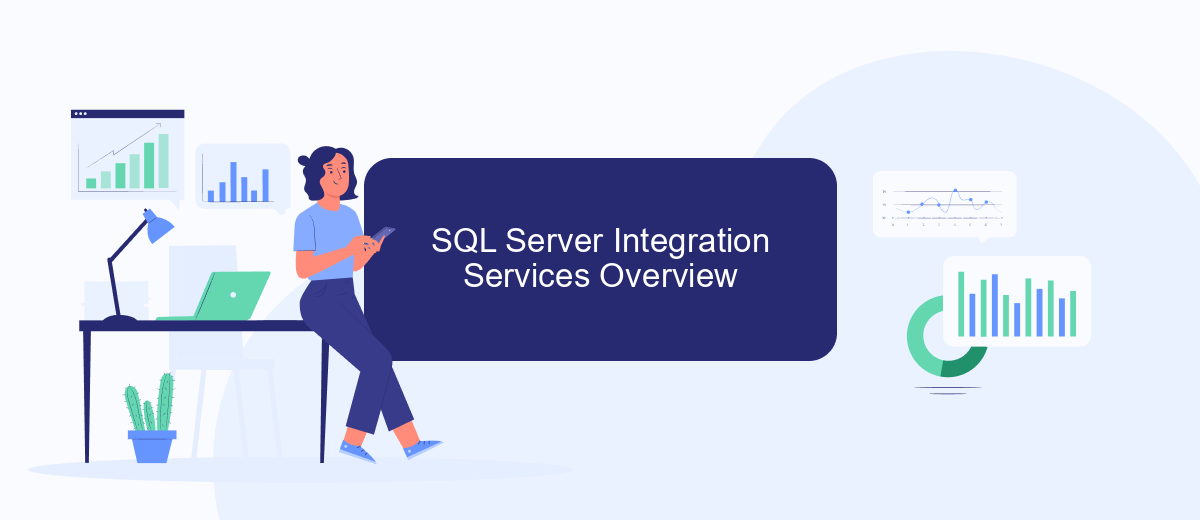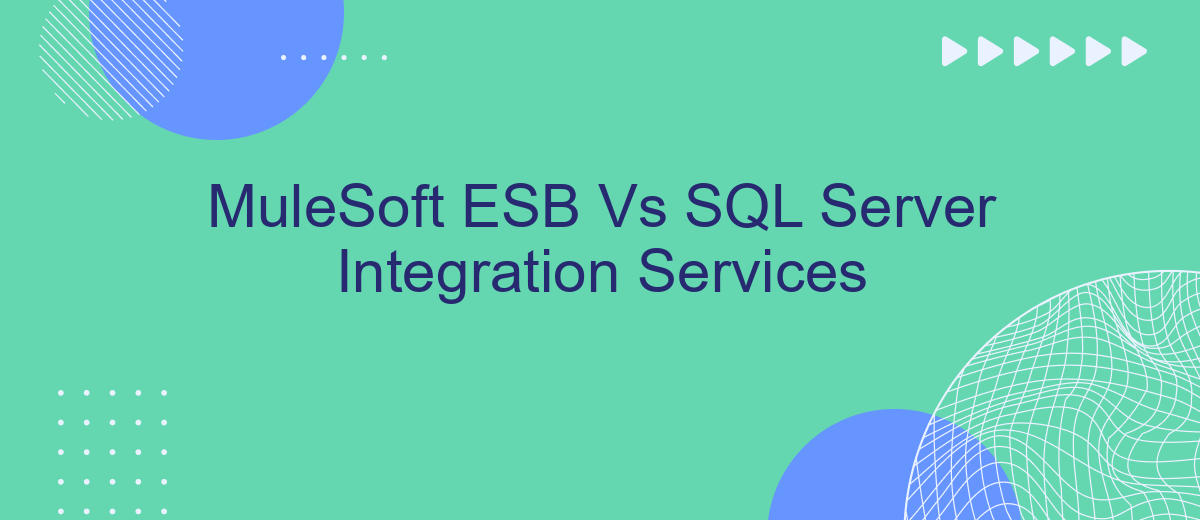In today's rapidly evolving technological landscape, businesses require robust integration solutions to streamline their operations and enhance efficiency. This article delves into a comparative analysis of MuleSoft ESB (Enterprise Service Bus) and SQL Server Integration Services (SSIS), two powerful tools that facilitate seamless data integration and process automation. By examining their features, capabilities, and use cases, we aim to provide insights to help you make an informed decision.
Introduction
In today's rapidly evolving digital landscape, businesses are increasingly relying on robust integration platforms to streamline their operations and ensure seamless data flow across various systems. Two prominent solutions in this space are MuleSoft ESB and SQL Server Integration Services (SSIS). Both platforms offer unique capabilities and benefits, making it essential for organizations to understand their differences and choose the one that best fits their needs.
- MuleSoft ESB: A comprehensive integration platform that supports a wide range of protocols and data formats, enabling businesses to connect disparate systems efficiently.
- SQL Server Integration Services (SSIS): A data integration and workflow application from Microsoft, designed to facilitate data migration, transformation, and loading (ETL) processes within SQL Server environments.
While MuleSoft ESB excels in its flexibility and extensive connector library, SSIS is renowned for its tight integration with Microsoft SQL Server and ease of use for database-centric tasks. Additionally, services like SaveMyLeads can further enhance integration capabilities by providing automated workflows and seamless data synchronization between various platforms. Understanding the strengths and limitations of each solution will empower businesses to make informed decisions and optimize their integration strategies.
MuleSoft ESB Overview

MuleSoft ESB (Enterprise Service Bus) is a powerful integration platform that allows businesses to connect their applications, data, and devices seamlessly. It provides a comprehensive suite of tools for designing, building, and managing APIs and integrations. MuleSoft ESB supports a wide range of integration patterns and protocols, making it a versatile solution for various integration needs. With its robust capabilities, businesses can achieve real-time data synchronization, streamline workflows, and enhance operational efficiency.
One of the key features of MuleSoft ESB is its ability to simplify the integration process through a visual interface and pre-built connectors. This enables users to quickly set up integrations without extensive coding knowledge. Additionally, services like SaveMyLeads can complement MuleSoft by automating data transfers and lead management processes, further enhancing the efficiency of business operations. By leveraging MuleSoft ESB, organizations can ensure seamless communication between disparate systems, leading to improved data accuracy and better decision-making.
SQL Server Integration Services Overview

SQL Server Integration Services (SSIS) is a powerful data integration and workflow application used to migrate data, manage SQL Server objects, and automate various maintenance tasks. It is a component of the Microsoft SQL Server database software that can be used for a wide range of data migration tasks.
- Data Warehousing: SSIS can extract, transform, and load (ETL) data from various sources into a data warehouse.
- Data Transformation: SSIS allows for complex data transformations and data cleansing operations.
- Workflow Automation: SSIS can automate administrative tasks and workflows, including database maintenance and data loading.
SSIS offers a scalable and flexible solution for data integration and transformation needs. It supports a variety of data sources, including relational databases, flat files, and cloud services. Additionally, tools like SaveMyLeads can be integrated with SSIS to streamline data workflows and automate lead management processes, further enhancing the capabilities of your data integration setup.
Comparison of Features

MuleSoft ESB and SQL Server Integration Services (SSIS) are two prominent tools for integration, each with distinct features and capabilities. MuleSoft ESB is an enterprise service bus that provides robust integration solutions for connecting various applications, data, and devices. On the other hand, SSIS is a component of the Microsoft SQL Server database software that facilitates data integration and workflow applications.
When comparing MuleSoft ESB and SSIS, it is essential to consider their core functionalities and how they align with specific business needs. MuleSoft ESB excels in providing comprehensive API management and real-time data integration, making it suitable for complex and dynamic environments. SSIS, however, is more focused on ETL (Extract, Transform, Load) processes and is highly effective for data warehousing and batch processing tasks.
- Integration Capabilities: MuleSoft offers extensive API-led connectivity, while SSIS specializes in ETL operations.
- Real-Time Data Processing: MuleSoft supports real-time data integration, whereas SSIS primarily handles batch processing.
- Ease of Use: SSIS provides a user-friendly interface for data transformations, while MuleSoft requires more technical expertise.
- Scalability: MuleSoft is designed for large-scale, enterprise-level integrations, while SSIS is optimal for data-centric tasks.
Both MuleSoft ESB and SSIS have their unique strengths, and the choice between them depends on the specific requirements of the integration project. For businesses looking to automate lead integrations and streamline workflows, tools like SaveMyLeads can complement these platforms by offering easy-to-use, no-code solutions.
Conclusion
In conclusion, both MuleSoft ESB and SQL Server Integration Services (SSIS) offer robust solutions for enterprise-level data integration and management. MuleSoft ESB excels in providing a versatile and scalable platform for integrating various applications, services, and APIs across different environments. It supports a wide range of protocols and formats, making it an excellent choice for complex integration needs. On the other hand, SSIS is highly efficient for ETL processes within the Microsoft ecosystem, offering seamless integration with SQL Server and other Microsoft products, making it ideal for organizations heavily invested in Microsoft technologies.
When choosing between these two, it is essential to consider your specific business requirements, existing infrastructure, and long-term integration goals. For those looking for an additional layer of automation and ease of use, services like SaveMyLeads could further streamline the integration process by automating lead generation and data synchronization tasks. Ultimately, the right choice will depend on the unique needs and priorities of your organization, ensuring that you can achieve seamless and efficient data integration.
- Automate the work with leads from the Facebook advertising account
- Empower with integrations and instant transfer of leads
- Don't spend money on developers or integrators
- Save time by automating routine tasks
FAQ
What are the main differences between MuleSoft ESB and SQL Server Integration Services (SSIS)?
Which tool is better suited for real-time data integration?
Can MuleSoft ESB and SSIS be used together?
How does SaveMyLeads help with integration automation?
What are the licensing and cost considerations for MuleSoft ESB and SSIS?
Would you like your employees to receive real-time data on new Facebook leads, and automatically send a welcome email or SMS to users who have responded to your social media ad? All this and more can be implemented using the SaveMyLeads system. Connect the necessary services to your Facebook advertising account and automate data transfer and routine work. Let your employees focus on what really matters, rather than wasting time manually transferring data or sending out template emails.

